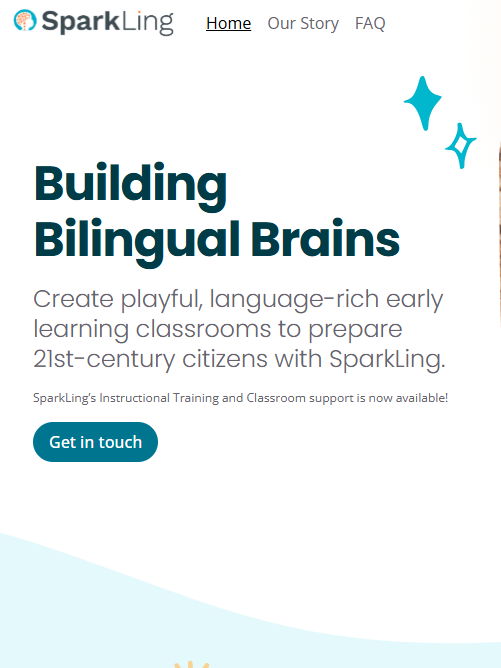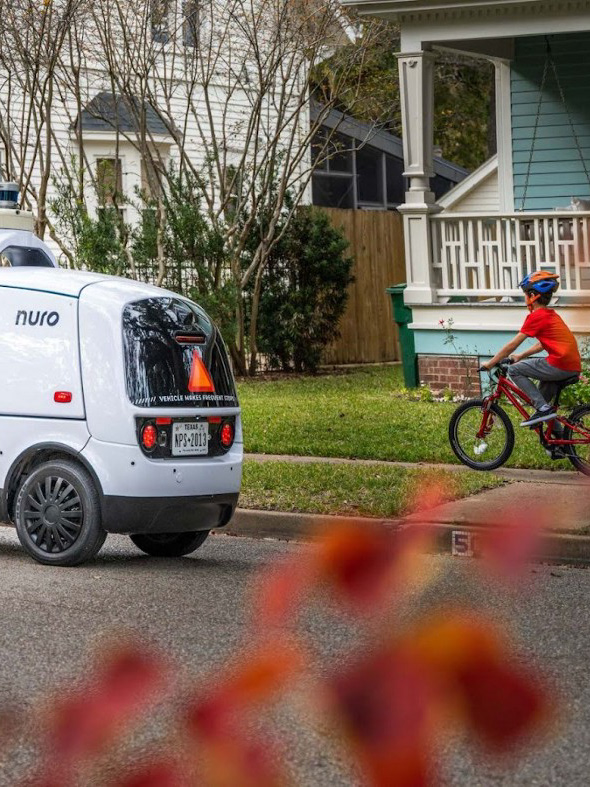Project Overview
Users: Children- Older Adults
Duration: 1/2021- 3/2021
Contributions: Ideation, literature review, video prototyping, UX strategy, feature creation, research facilitation & recording, & writing for: research guide, presentation, reports, and final storyboard
Team: Michael Eisen, Ann Lei, Angela Xu
Project Summary
The pandemic has imposed isolation on people across the world. These people vary in age, space, geographical distribution, etc. This has left a lot of people feeling lonely.
Prompt: "In this historical era of pandemic-imposed isolation, we have all faced longing for our friends and family—and a need to feel connected, particularly to those people who are geographically distributed...you will extend and build on Ishii’s vision for mediating intimate connections via interactive technology."
Stellar: Stargaze with your loved ones, together
Research
Literature Review
We reviewed 27 different articles and derived 4 different high-level themes:
1. Effective designs are commonly easily incorporated into daily routines.
2. Two-way communication is essential to foster meaningful interactions: sending and receiving messages, encoded within a variety of data points, can greatly improve the quality of the experience of a design.
3. When messaging is abstract (i.e. not in the form of verbal or written language), intimacy can be enhanced by intentional and customizable communication.
4. The most vulnerable populations affected by the forced separation of the pandemic were children and senior adults.
How might we facilitate distanced cross-generational connections between loved ones that are both meaningful and intimate?
Conceptualization
Ideation and Down-Selection
Now that we had conducted our literature review, we used our derived themes to guide our ideation process. We generated 63 concepts in total.
Grouping
Decision Matrix
We conducted an initial round of dot voting to help us visualize our concept execution with fidelity to our themes from our literature review and what we found exciting. We plotted these on a decision matrix before conducting another round of dot voting. Our second round of dot voting would leave us with 2 ideas to prototype for our co-design session.
Down-Selection: 2 Designs
For our co-design session, we would test our constellation night light, and pregnancy belt concepts. This session was conducted with kids, and would help us gather perspective on interest, usability, and excitement from young users.
Our 2 concepts for presentation were a Constellation Night Light and Pregnancy Belt
For this co-design session, I helped produce a low fidelity prototype video, was a facilitator, and spearheaded writing the session guide while structuring how we might gather feedback through the use of creating an open-access google slideshow.
At this point in our design, Stellar was a night light board with a web-based platform with which others could interact.
In our remote kid's team session, our participants gave us written and verbal feedback on a google deck. We used a written session guide in conjunction with the deck.
Feedback
Takeaways
1. Kids had a notable interest in the night light over the pregnancy belt.
2. Linguistic messaging was requested.
3. Operational parameters and functioning- When was this able to be used? How do we define the function around daily routines?
4. Specifically around bedtime, we would want to be careful about defining usage.
1. The night light board was clearly more interesting to the kids in our co-design session.
2. We can try LED scrolling on the board.
3. Modes- Active play and night mode could be incorporated.
Co-Design and Wizard of Oz Prototype Testing
After our Kid's Team testing, we refined some of Stellar's features and started to prepare Wizard of Oz usability testing. For this next phase, we wanted to test our prototype with adults in order to design meaningful interactions between intergenerational stakeholders. We would be testing the following functions: creating a custom constellation, selecting a pre-arranged constellation, customizing colors, displaying a scrolling LED message
I wrote the study guide, recruited participants, and conducted the testing out of my house. My teammates produced interfaces, annotated, recorded, and acted as the "Wizard" behind the curtains during testing.
Testing our web-based interface for the Constellation Night Light.
Mike used a remote computer to generate input from our users onto a second display monitor.
Feedback
Takeaways
1. We needed to figure out how to allow and block people from using or accessing the board.
2. The ability to customize light patterns and colors was highly desirable.
3. Predetermined constellations allowed users to interact if they didn't want to draw.
4. More choices of predetermined constellations may have allowed for more expression (e.g. having constellations that correlate to the zodiac?)
5. The layout was confusing. Labeling could help.
6. Keep the layout simple, but customizable as to encourage different people of various ages to interact.
1. We needed to iterate on our IA- specifically our visual and textual hierarchy.
2. Complex patterns did not translate well to the LEDs on the board. We could try randomizing the grid to help.
3. We should have tested this with two-way interactions. Our concept was designed for two-way interactions.
4. We could incorporate a scrolling LED section of the board that could be programmed to scroll with letters.
Co-Design Round 2
Based on our first kids co-design session and the WoZ testing, we refined the Constellation Night Light web-based interactions to prepare them for further usability testing.
We wanted to test customizing a constellation with a randomized grid of LEDs to compare to. a uniform grid. We assumed a more uniform grid might be more user-friendly, and thereby preferable. We wanted more feedback on alternative forms of messaging to understand if customizing a constellation or message affects a user's perception of intimacy.
For this session, I helped scaffold a study guide, analyzed, and synthesized recordings (audio and video) of the session for a report with my teammate Mike.
Angela and Ann conduct a test of the drawing function on our web-based interface.
Feedback
Takeaways
1. This session was less conclusive in terms of feedback. It was difficult for kids to use Miro.
2. Kids wanted intentional messaging. Specifically, they wanted language-based messaging.
3. "Drawing" did not accurately reflect from input to output. Randomized LEDs were conceptually advanced for kids.
1. We could test more accurately with a "role-play" scenario where kids are able to interact with someone receiving messaging from the platform.
2. We received feedback from industry professionals that messaging should be distinct from other messaging platforms. We needed to consider each LED as a data point. Sometimes what users want is not the best design decision.
3. Kids liked the function of being able to draw out patterns. selecting the LED avatars instead of drawing might improve usability.
Iterating- physical prototype, digital touchpoints, real meaning
To make Stellar real, we had to put together a platform and physical board that could work together. Angela, our team's strongest electrical engineer, installed a 100-LED Neopixel strand in a cardboard base which was painted black. The lights were arranged in a randomized pattern. The LEDs were attached to a Circuit Playground Express (CPX) minicomputer. The CPX was programmed in MakeCode to display various states concordant with different designed features.
Features
Web-based Connection
We realized early on that a physical board may not be accessible for various individuals such as seniors, people with limited income, people with limited space, etc. For this reason, we wanted to ensure users could interact with stellar from a computer or mobile device. To do this, someone would simply select the dots as compared to selecting one of the buttons associated with pre-determined designs.
Here is our wireframe for our final web-based designed interactions. These were mocked up by Ann Lei.
Animations
We decided on a few different modes of messaging: Customized animations, sending a pre-arranged animation by clicking a button, representative constellations, and custom patterns. These could be associated with a specific message, such as "I miss you," "I love you," or "Thinking of you," etc. Each person connected through the board can customize the meaning of each sent animation, making these packaged messages rather than simple animations.
Meet Stellar, the interactive constellation night light. Reminding us of the people in our lives. Separated, we may feel disparate. Together we form constellations.
Night light mode
In night light mode, each LED is an avatar representative of the people in someone's life. Each person can choose a color and place within a constellation. Constellations were used for years to help orient people to direction. We aimed to leverage this mental model as people may feel disconnected and lost right now.
Here we see the Stellar board in Night Light mode.
Looking Back and Looking Forward
Takeaways
1. Use-case scenarios provide meaning. They can help generate the dynamics of usability tests such as testing 2-way interactions, using a role-play to test perceptions, generating narratives for product journeys, and helping stakeholders empathize with users.
2. Designing constellations articulate meaning across users. To distinguish Stellar from other products, we stretched mental models, LED data points, and the stars they represent as containers for expression. To create an abstract and more meaningful experience, we transposed functions of way-finding, syntax created by relational positionality, and stargazing. This is how we formulated animations to convey powerful emotions like "I miss you," constellations that display LEDs representing loved ones, or two-way interactions whether or not someone has the physical board.
3. Collaboration enabled our team to create meaning. This team was dynamic, and our product garnered a lot of attention from industry partners, instructors, and classmates (you can see it on the MHCI+D Instagram). Because we assumed positive intent, we aligned and iterated quickly.
Reflection
Physical computing paired with rapid conceptualization, iteration, research, and writing was fun and challenging. The project ignited an ongoing excitement and practice of experimental physical computing (see design-led inquiry).
I found my strength in generating study guides, activities, and strategizing action from insights, research, and feedback. It pushed my analytical, and collaborative thinking to new levels. To succeed, I had to advocate for stretching mental models and analyzing the relative value of a product versus user feedback. To make these concepts a reality, I had to solicit buy-in from our engineer and designer through sound logic, attention to detail, and effective communication that tied feedback from multiple stakeholders to a happy medium that addressed desires while also addressing concerns and design heuristics.






